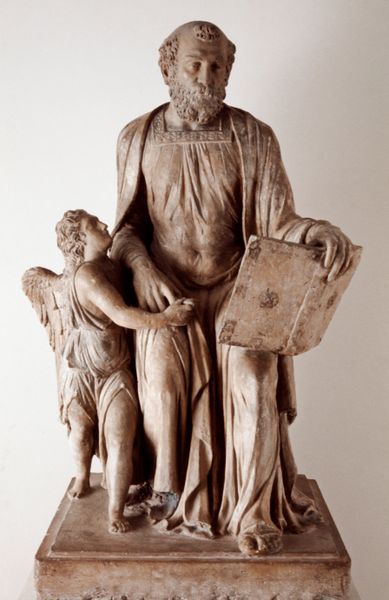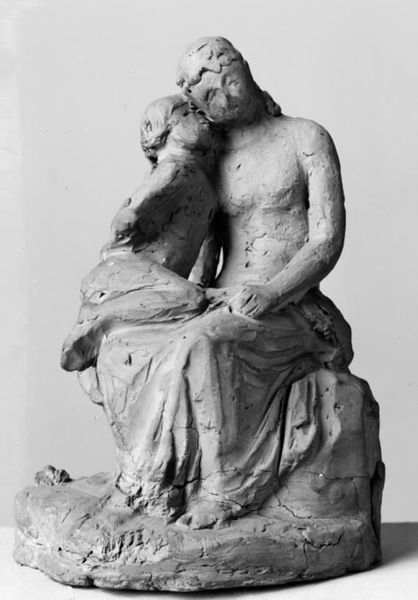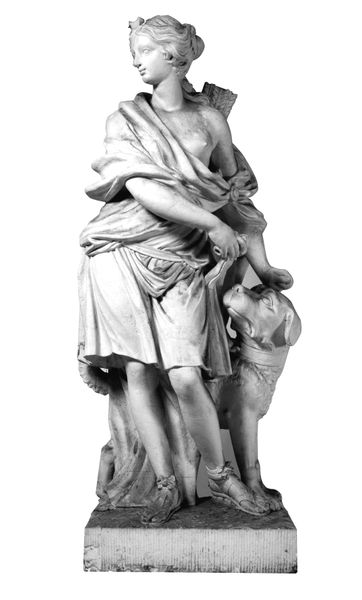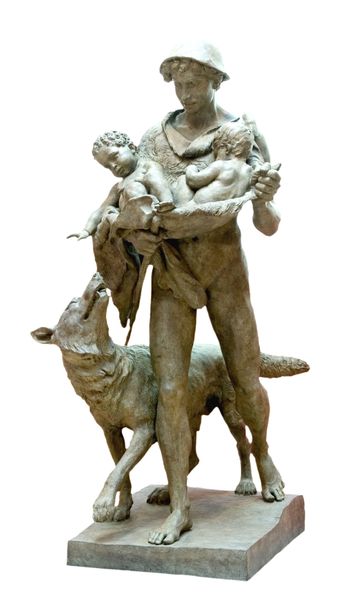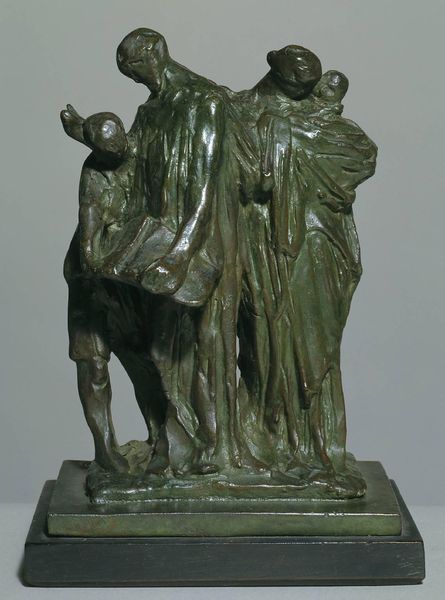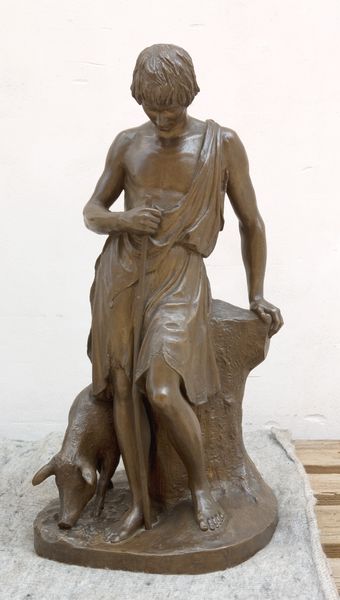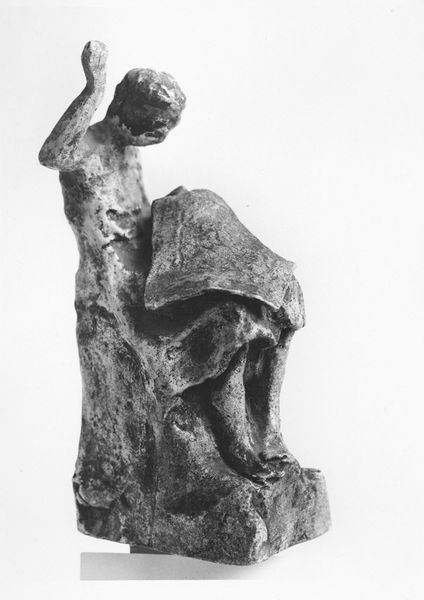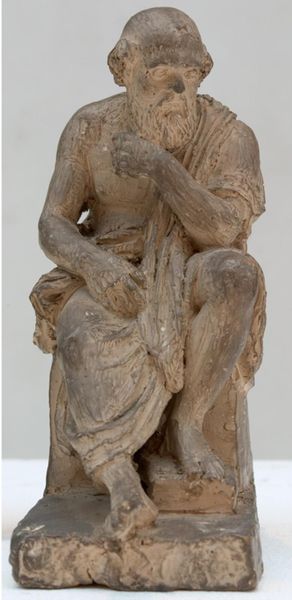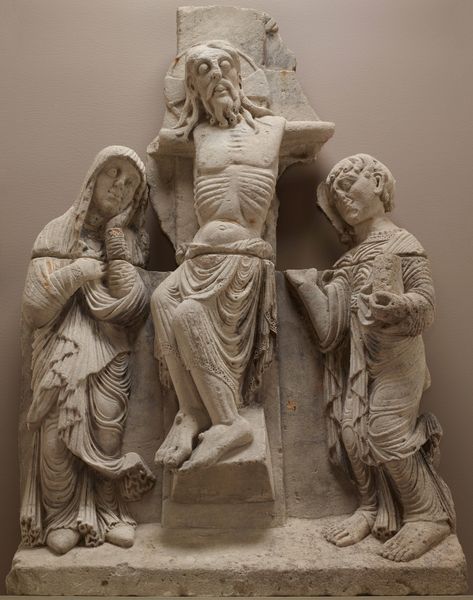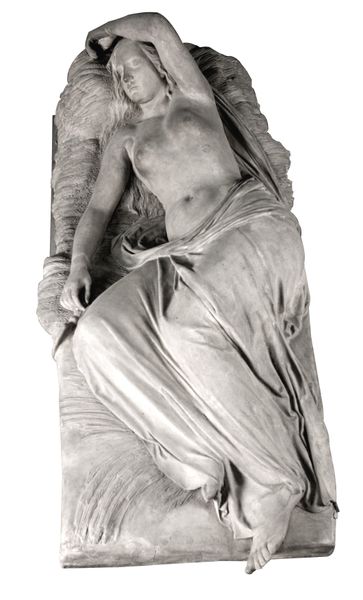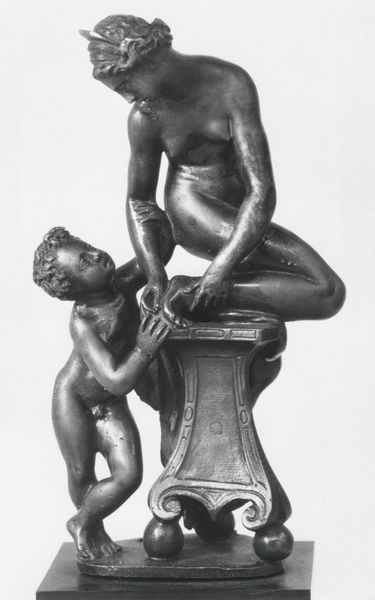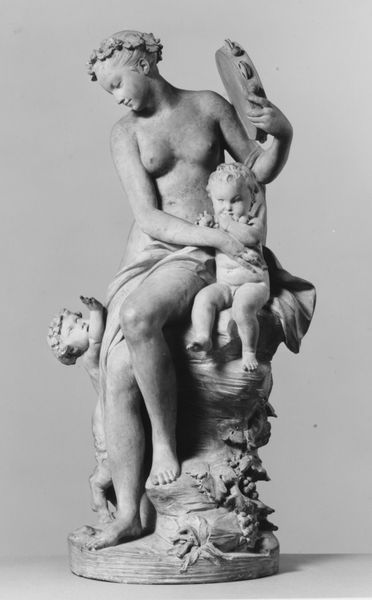
carving, sculpture, marble
#
portrait
#
carving
#
sculpture
#
greek-and-roman-art
#
figuration
#
classicism
#
sculpture
#
marble
Copyright: Public domain
Editor: Yannoulis Chalepas' "Medea III," a marble sculpture from 1933, possesses this incredible rawness, a barely contained emotionality. The figures feel trapped, almost suffocated, within the stone itself. How do you interpret this work, especially given its classical allusions? Curator: It's crucial to situate Chalepas' Medea within a complex web of societal anxieties. The Medea myth, already charged with themes of betrayal and infanticide, takes on another layer when considered through a modern lens. How might Chalepas be commenting on patriarchal structures, which drive Medea to such extremes? Editor: I hadn't considered that angle. So, the sculpture isn't just a depiction of the myth, but also a critique? Curator: Exactly. Think about the formal choices, too. The figures are roughly hewn, not idealized in the classical tradition, suggesting the violence inflicted upon Medea’s identity and agency. Her positioning dominates, but doesn't necessarily empower her; she is the tragic anti-hero, crushed between circumstance and her own actions. Editor: The figures do seem trapped, without escape. And her face...it’s not beautiful, it’s weary and worn. Curator: Indeed. Chalepas compels us to confront uncomfortable questions about power dynamics, marginalization, and the psychological toll of systemic oppression. What does it mean to portray such a figure in this way, in this period of time? Editor: It feels less like a historical drama, and more like a commentary on timeless issues of injustice and female rage. Curator: Precisely. Hopefully this experience challenges us to see the classics with a critical, contemporary gaze, always asking: who holds power, and whose stories are silenced? Editor: I'll definitely never look at Greek mythology the same way again. Thanks.
Comments
No comments
Be the first to comment and join the conversation on the ultimate creative platform.
